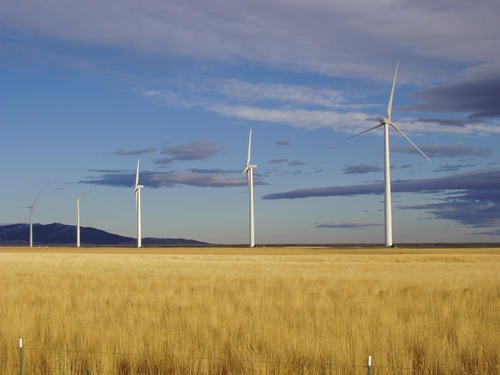Sizing Up Onshore Wind Generation
How the 2021 regional power plan will model onshore wind
- November 18, 2019
- Carol Winkel

Mike Starrett, energy analyst for the Northwest Power and Conservation Council, briefed the power committee in November on how staff will model onshore wind generation in its 2021 regional power plan. Wind is the largest source of renewable energy in the United States and the Northwest's second largest renewable resource after hydro generation.
In evaluating a particular technology, staff develops, in consultation with the Council's generating resources advisory committee, draft reference plants to capture characteristics such as the size, cost, operation, and maximum build out. The information is used in the Council's modeling to develop its resource portfolio recommendations.
According to Starrett, the interior U.S. is a world class wind resource and improvements in technology and taller turbine hub heights have led to substantial increases in system capacity factors, capturing more energy and lowering the cost of energy sold by wind project developers. In a 2016 study, funded by the Department of Energy, experts around the world anticipated continued improvements to wind turbine technology:
"According to the wind experts, larger turbines are on the horizon, enabling further reduction in the cost of wind energy on land and offshore. Turbine design will continue to vary by market and project site, but the experts forecast continued evolutionary growth in average turbine size on land, and more revolutionary growth offshore." Advanced turbines will be much larger and taller, enabling them to be sited at higher altitudes where the wind blows more steadily. Next generation blades, intelligent controls, and remote monitors will also improve turbine efficiency.
Starrett also noted that along with wind's increasing ability to produce electricity, declining capital costs and the impact of the federal production tax credit have led to very low prices for wind generation. The tax credit, designed to spur investment by reducing taxes for renewable energy producers, is set to expire for large wind facilities at the end of this year.
Staff is proposing wind reference plants sited in three locations to use in the Council's modeling: The Columbia Gorge, southeast Washington, and Montana. Each location has the same cost, but different capacity factors and transmission charges.


